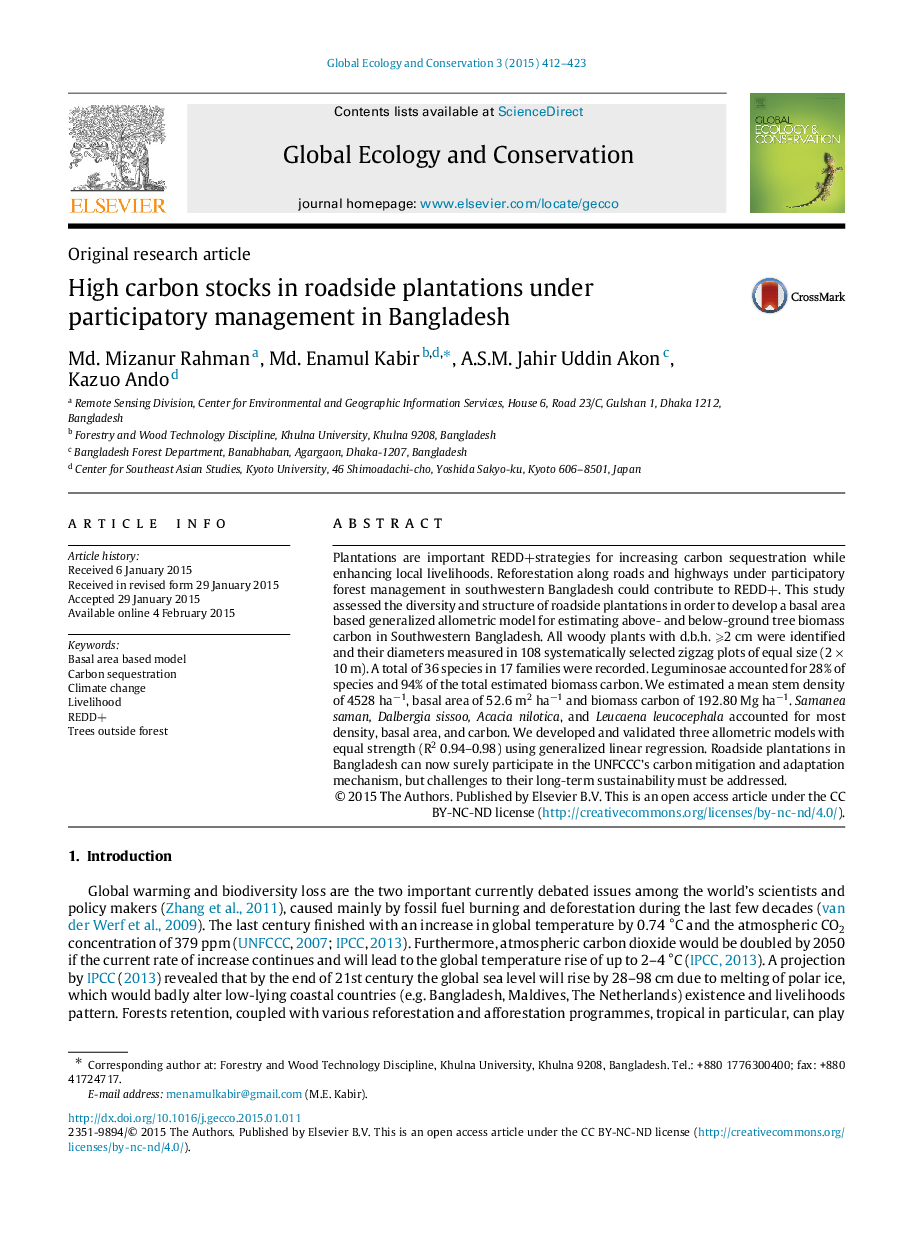| Article ID | Journal | Published Year | Pages | File Type |
|---|---|---|---|---|
| 4379578 | Global Ecology and Conservation | 2015 | 12 Pages |
Abstract
Plantations are important REDD+strategies for increasing carbon sequestration while enhancing local livelihoods. Reforestation along roads and highways under participatory forest management in southwestern Bangladesh could contribute to REDD+. This study assessed the diversity and structure of roadside plantations in order to develop a basal area based generalized allometric model for estimating above- and below-ground tree biomass carbon in Southwestern Bangladesh. All woody plants with d.b.h. ⩾2cm were identified and their diameters measured in 108 systematically selected zigzag plots of equal size (2Ã10m). A total of 36 species in 17 families were recorded. Leguminosae accounted for 28% of species and 94% of the total estimated biomass carbon. We estimated a mean stem density of 4528haâ1, basal area of 52.6m2haâ1 and biomass carbon of 192.80 Mg haâ1. Samanea saman, Dalbergia sissoo, Acacia nilotica, and Leucaena leucocephala accounted for most density, basal area, and carbon. We developed and validated three allometric models with equal strength (R2 0.94-0.98) using generalized linear regression. Roadside plantations in Bangladesh can now surely participate in the UNFCCC's carbon mitigation and adaptation mechanism, but challenges to their long-term sustainability must be addressed.
Related Topics
Life Sciences
Agricultural and Biological Sciences
Ecology, Evolution, Behavior and Systematics
Authors
Md. Mizanur Rahman, Md. Enamul Kabir, A.S.M. Jahir Uddin Akon, Kazuo Ando,
